Novatel Wireless MiFi 4510L Review - The Best 4G LTE WiFi Hotspot?
by Brian Klug on July 14, 2011 5:20 AM ESTWhat's Inside
Just like the Samsung SCH-LC11, at the core of the 4510L is a Qualcomm MDM9600 baseband which is responsible for both LTE and 1x/EVDO data connectivity, attached NAND, Qualcomm RTR8600 multi-band/mode RF transceiver, and a Qualcomm WCN1312 WLAN stack for single spatial stream 802.11n. What’s surprising (at least to me) about both the SCH-LC11 and 4510L is that both lack a discrete application processor for managing both the web front-end and the networking side of things (routing, firewall, NAT). The MDM9600 must have a relatively beefy onboard ARM11 or something for this to be sufficient, and as we’ll show later there are similarities in the configuration portals that made this a dead giveaway even before I took a peek inside.
You can see the MDM9600 sitting next to its attached Toshiba 1 Gbit (128 MB) NAND, and to the right of it the WCN1312. Above the MDM9600 is the RTR8600 transceiver. The gold contacts on the far left are for cellular connectivity, and WiFi is at far right. The contacts to the right of WCN1312 are simply for battery.
I didn’t go any further with my disassembly because of the delicate ZIF cable snaking around which leads to the e-ink display, and honestly most of what there is to find interesting was already on the this side.
WLAN connectivity is still limited to just the 2.4 GHz ISM band, which rapidly gets crowded and unusable at large gatherings. I sound like a broken record, but it really is impossible to communicate just how much of a problem that is until you’re in a crowded room with 30 other APs all using the same 60 MHz of 2.4 GHz ISM bandwidth. When that happens, it’d be useful to be able to use device-as-modem and tether over USB instead. I got the opportunity to experience this firsthand with the 4510L at two conferences, it’s simultaneously fascinating and frustrating to experience. The best temporary solution is to move to the 5 GHz ISM which has many more non-overlapping channels, and propagation characteristics that will help keep signals confined to a single room instead of an entire venue. Anyhow, I digress.
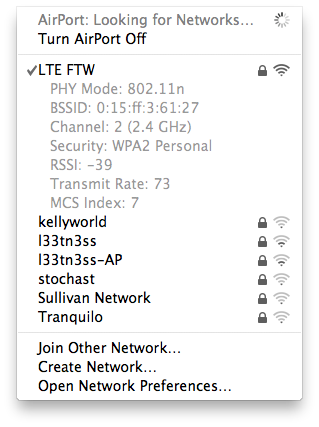
Range on the 4510L is quite far, in fact it’s almost too far. I was able to connect to the 4510L a surprising distance away, downstairs several rooms away from the 4510L and still have both decent RSSI and good enough MCS that typical EVDO performance wouldn’t be degraded at all. Again it’s a bit frustrating because having a very powerful WLAN radios might make sense if your particular use case is having the 4510L serve a household or small office temporarily, but isn’t desirable when you’re on battery power or again in a crowded environment. There’s no way to easily change this through the web front-end either.
The other important feature the 4510L brings is inclusion of an external antenna jack on the device. There’s a plastic flap which pries up revealing the TS9 jack underneath.
I happened to have a few TS9 antennas laying around, including one multi-band antenna which works well in the 800 / 1900 MHz bands Verizon uses for 1x/EVDO, unfortunately I didn’t have the foresight to have it with me when traveling to 700 MHz LTE markets.
Using my simple TS9 antenna and watching the signal report in the diagnostics menu showed that it definitely improved signal, at least when used in conjunction with CDMA2000 1x/EVDO. I don’t believe that this antenna jack is on the 700 MHz LTE RF chain for the device, however I could be entirely wrong, again I didn’t get the chance to test this.
Antenna Disconnected:
Signal - EVDO: -65 dBmSignal - 1X: -72 dBmSignal - LTE: Not AvailableSINR - LTE: 30 dBEc/Io : -7.00 dB
Antenna Connected:
Signal - EVDO: -60 dBmSignal - 1X: -70 dBmSignal - LTE: Not AvailableSINR - LTE: 30 dBEc/Io : -7.00 dB
The 4510L’s internal antennas are on separate sides of the device as I mentioned before. In the photo below, the contacts at left are for cellular, those at right are for WLAN. With the device face up, that puts the cellular antennas nearest the e-ink display, WLAN on the opposite side.
The 4510L supposedly does include GPS support internally, however there’s no way to get at it either from the device’s web portal or over serial when connected to USB. The Novatel 4510L datasheet does include note of GPS support, however, it’s just disabled per Verizon’s choice no doubt.


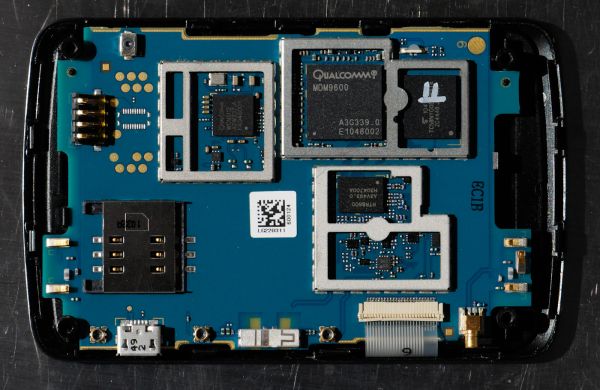
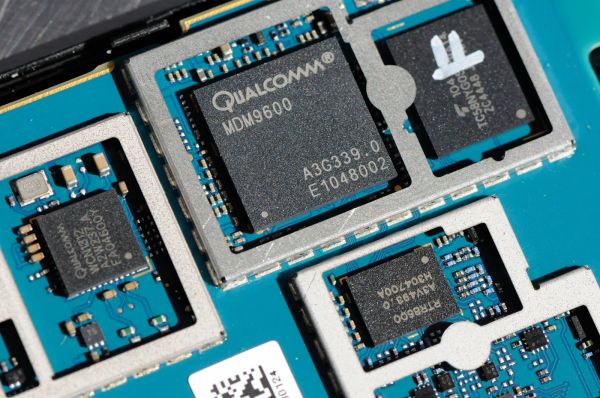
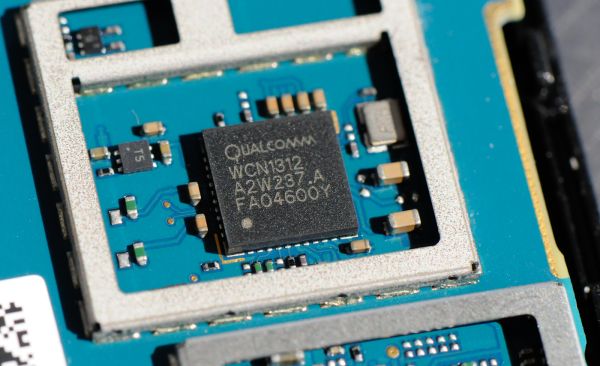







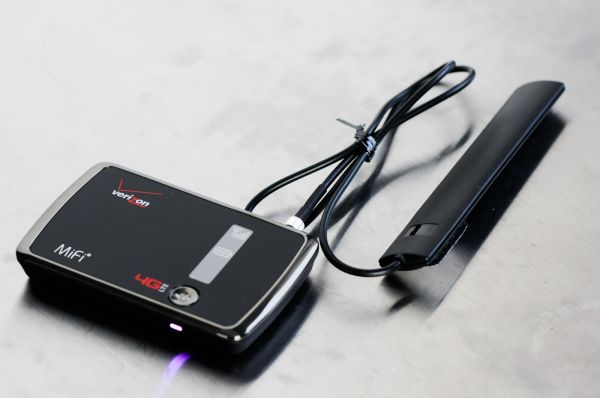
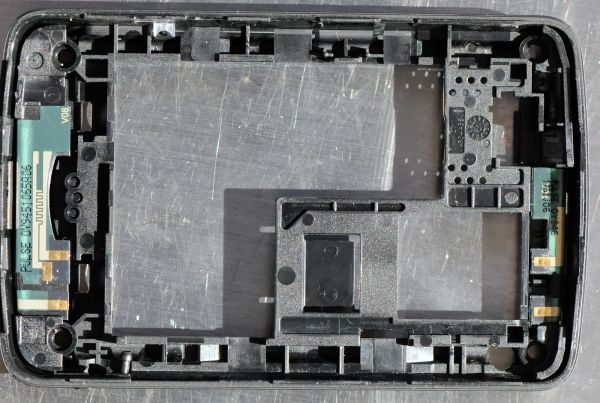








24 Comments
View All Comments
quiksilvr - Thursday, July 14, 2011 - link
Wouldn't it make sense to pay for speed instead? I guess the LTE network needs to be more widespread in order for this to work, but it just seems like a sick joke. Oh here's 10 Mbp/s, enjoy it for an hour a month!>:(
Brian Klug - Thursday, July 14, 2011 - link
That's actually *exactly* what AT&T's plans for LTE are. Part of their plan will involve QoS enforced speed tiers just like any other ISP. That was part of what was leaked a while back, you can see for yourself here: http://twitpic.com/5q42gxAlso speeds will be between 8-12 Mbps on AT&T's 700 / 1700 / 2100 MHz LTE deployment.
zanon - Thursday, July 14, 2011 - link
Of course it makes sense, on every network. Bandwidth caps and QoS tiers are what all connections should be, it's what actually is limited. Datacaps exist because it makes it easier to both milk people for more money, and to limit disruption to outdated existing technologies. Given the control concentrated into so few hands however it's very hard to see anyway to get this situation fixed.mlosee222 - Thursday, July 14, 2011 - link
Good review, you are spot on about the lack of configuration options in the web front end. My device is never further than arm's length and it would be great to turn down the wifi power. I actually learned how to write an android app specifically so I could keep track of my data usage and view connection stats on my phone without being logged in the browser interface. Its functional but the GUI is about as pretty as a linux shell.I don't have LTE in my area yet, although I got to use it a little bit in Vegas. In my experience the 45010L had trouble switching between 3G/4G and required a reboot to get the signal back. I did about five speed tests in Vegas; never broke 5mb and latency was never below 100ms.
LTE just went live in Salt Lake and my area *should* be getting it soon. The last couple weeks I've periodically seen phantom LTE signals with good stats (-60 dbm, 8 snr) but am so far unable to connect. I'm not sure if its a real signal or if the device is lying to me.
I actually use the 4510L exclusively for the data plan on my Nexus S. I don't mind carrying another device in my pocket since I get a data connection that actually works reliably. In my opinion, its a good idea to decouple the data connection from the phone. Tethering a PC is mandatory for my workload and I don't like the red tape carriers put in the way of using phones as a hotspot. That, and its nice to get LTE with a phone that has only an HSDPA antenna.
Overall I'm satisfied with the 4510L. I haven't really experienced LTE yet, although I'm tickled pink with the 3G connection alone. Then again, I'm just happy to get away from the stone-age, overloaded TMobile towers.
jrs77 - Thursday, July 14, 2011 - link
http://www.huaweidevice.com/worldwide/productFamil...The Huawei E5830 has all you want. It supports all bands, has a neat web-interface to configure it, has no sim-lock and supports USB-storage. Oh... and it's dirt-cheap for $80 and can connect up to 5 clients simulatanously.
dreddly - Thursday, July 14, 2011 - link
cool. this sounds like what I need. Our LTE is missing in CanadaBrian Klug - Thursday, July 14, 2011 - link
Maybe next we will check out one of these, I carry around a couple of Huawei modems for personal use that I've never really reviewed or anything. Their Mobile WiFi lineup seems to be gaining a lot of traction lately.-Brian
ggathagan - Friday, July 15, 2011 - link
But it doesn't list as a 4G/LTE deviceyelped - Thursday, July 14, 2011 - link
Sorry for being off-topic, but what's up with Anand's Evo 3D review? The self-evident answer is that he seems pretty busy lately.Thanks.
Brian Klug - Thursday, July 14, 2011 - link
He's working on it, just busy ;)-Brian